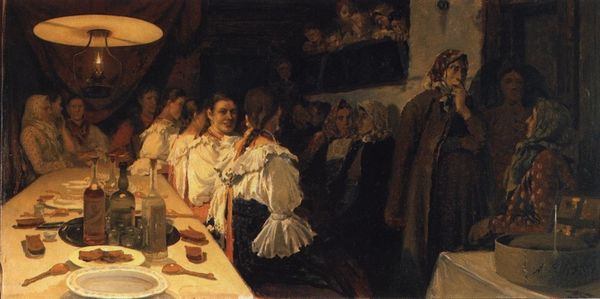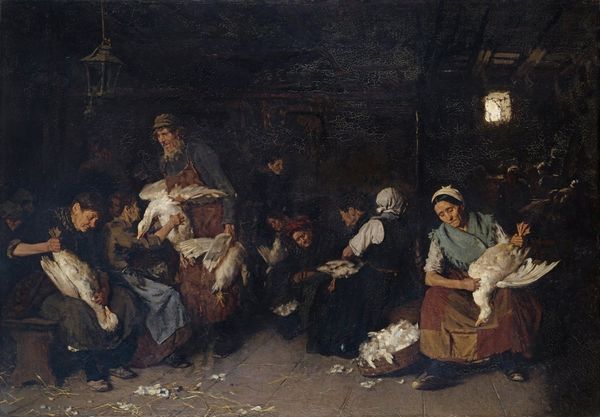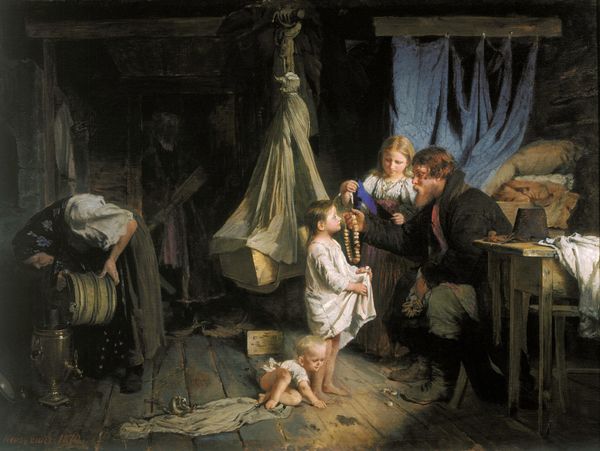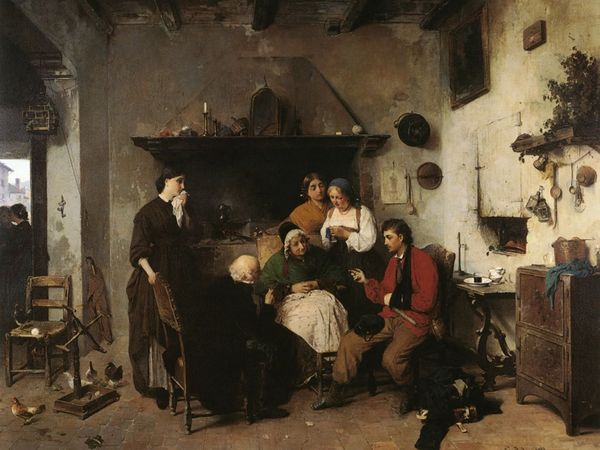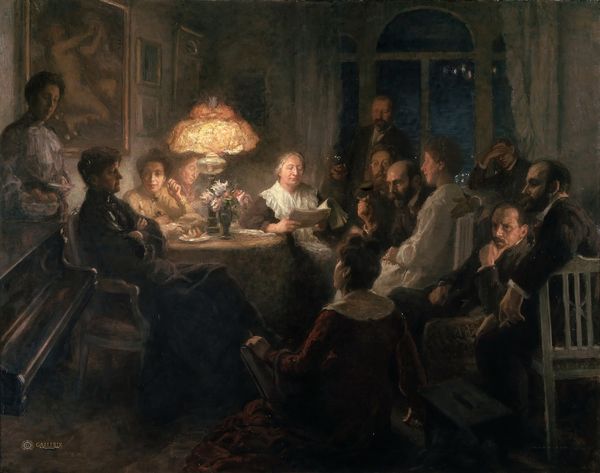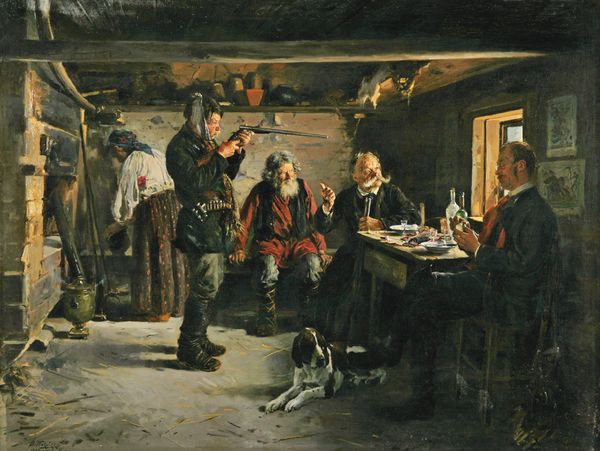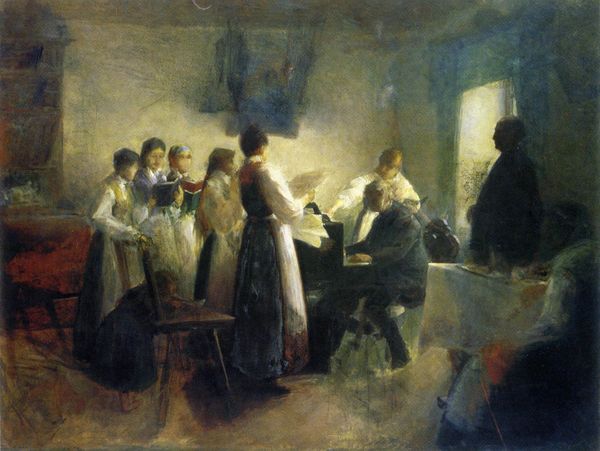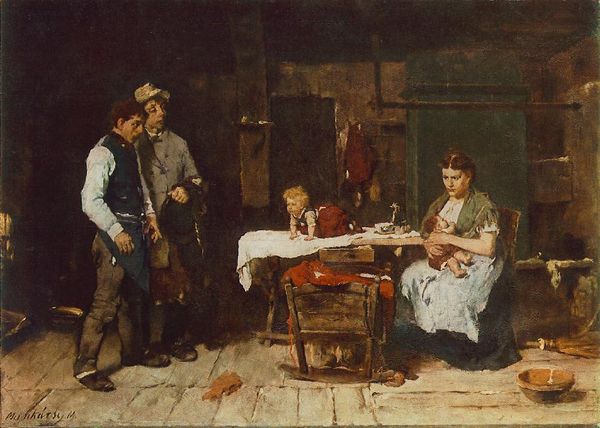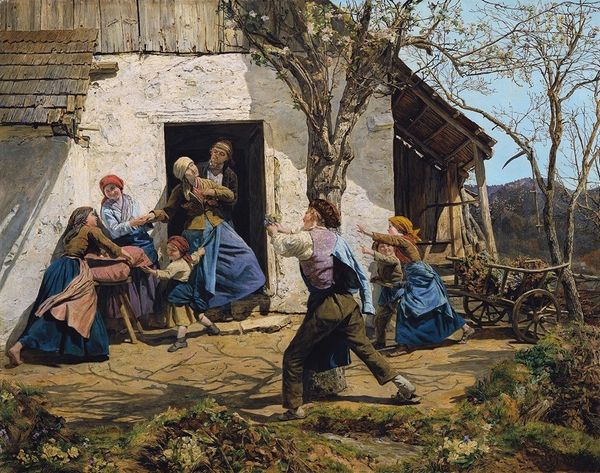
The bachelorette party 1882
0:00
0:00
vladimirmakovsky
Museum of Russian Art (Tereshchenko Museum), Kyiv, Ukraine
Dimensions: 121 x 189 cm
Copyright: Public domain
Editor: So, this is "The Bachelorette Party" by Vladimir Makovsky, painted in 1882, using oil paint. There's this feeling of warmth, of community. Everyone is gathered together. What do you see when you look at this piece? Curator: I'm struck by how Makovsky portrays labor and materiality within this celebratory scene. Observe the textures of the clothing: the rough spun cloth of the peasant dresses versus what seems to be a finer material adorning the bride. It speaks volumes about social distinctions and economic realities woven into even such intimate gatherings. Editor: So you’re not seeing it just as a genre painting depicting a social gathering? Curator: Absolutely not. Look closely. Consider the setting: a humble interior, the stark simplicity of the furniture, and the handmade musical instruments. Makovsky emphasizes the means of production of joy and tradition within a rural context. This is a deliberate contrast with idealized portrayals of the peasantry in much Romantic art. The bachelorette party here becomes a space where folk customs meet economic necessity. How are these traditions supported? Who profits, and who labours? Editor: I never really considered those angles. It's more than just a snapshot of a celebration. Curator: Precisely. The brushstrokes themselves convey a sense of lived experience – thick and visible, not glossed over. How does the raw texture of the oil paint influence your reading of the artwork? What materials were used? Who would have had access to these kinds of materials and who wouldn't? Editor: I guess I always just saw them as brushstrokes, not evidence of material reality. Curator: This piece prompts us to examine the materiality of everyday life and cultural rituals. Editor: Okay, now I get it. This is giving me so much to think about! I’m definitely going to look at other works with this lens. Curator: Indeed. By engaging with art from a materialist perspective, we can uncover layers of meaning and social commentary that are often overlooked.
Comments
No comments
Be the first to comment and join the conversation on the ultimate creative platform.
